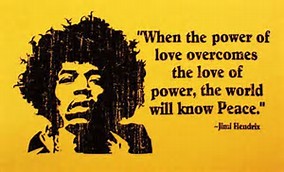Talking About Race, Sometimes Awkward But Always Necessary; Let’s start now
Talking about race with people who are different than you can be awkward and uncomfortable, but it’s necessary and doable. The fact is racism exists, racial conflict exists, and inequality still exists.
If you’re interested in beginning the conversation read on.
Even some people who work in the diversity and inclusion field stay in their comfort zone, and still almost only interact with people who are like them.
I’ve been interviewing and recording people from all races, backgrounds, ages and every other dimension of diversity for a new project, “Everyday Conversations On Race For Everyday People.” Everyone I’ve spoken with agrees that we need to have conversations about race, yet many are reluctant to talk to people outside of their own group. They feel awkward, uncomfortable or afraid of saying the wrong thing.
After facilitating conversations about race and other differences for over 25 years using our 3D Process, (Diversity, Difference and Dialogue.) we’ve found what works and what doesn’t. At the end of this article, you’ll find a few of our best practices.
Police shootings, Black Lives Matter, issues of inequality and increase in racist hate crimes and rhetoric substantiates the need to have real conversations about race.
At some point we need to ask ourselves, “What kind of world and community do we want to live in?” If we want to have a future where everyone can do their best work, and live in communities, countries and a world where people are not afraid of people who are different, we need to talk about race with people who don’t look like us.
Issues like the scarcity of people of color in the technology industry and the excuses and false belief that there is no pipeline to fill jobs necessitates a real conversation about race.
The fact that so many White people believe that all Black people are poor, the lumping of all Asian people and all Latino people into groups without understanding the different cultures amongst Asian and Latino people necessitate the conversation on race, along with all too common thinking that race in America is just about Black and White people.
We need the kind of conversations that dig deep down into the core of our belief systems, from our past and present experiences,and be willing to be uncomfortable and say “we don’t know.”
Talking about race across race can be awkward and uncomfortable if you never do it. Often the conversation focuses on numbers and representation because it feels safer, less personal and is one success measurement.
But real change has to go beyond numbers because people in your organization are more then numbers in the company photo. They are people who want to contribute their brilliance, be successful and help organizations be successful.
If organizational and individual bias, assumptions and stereotypes are not dealt with, and people who don’t look like everyone else don’t feel welcome they’ll leave. Pretending everyone is the same and that you don’t see color is a good way to make people feel invisible.
Research shows that while people often talk about race, they only do it with people who look like them. So while it’s a frequent topic, the way it’s spoken about and the importance of talking about race varies depending on the color of someone’s skin.
Most of the people of color I speak with talk about how they’ve been impacted by racism towards their group but don’t talk to other groups. White people in general just say they don’t know what to say.
How can we have conversations about race across race when we’re not comfortable?
1- Accept that it might be awkward and uncomfortable at first
Denying potential discomfort is even more awkward. This results in ignoring people who are different because you don’t want to say the “wrong thing,” so you only talk to people like you. Many of the White people in my diversity and inclusion coaching programs talk about this phenomenon.
People of color in my diversity, difference and dialogue program talk about feeling invisible, underutilized and underestimated in organizations where few people look like them.
3- –Before you begin, agree on how you will deal with disagreements, how you will give feedback and how you will respond. This makes it easier to have the conversation.

4-Let the other people you are talking with know that you feel uncomfortable but that the conversation is important. Everyone needs to assume positive intent while acknowledging that intent doesn’t always equal impact. Be willing to share the impact.
5-If the intent is positive but the impact is not, provide feedback that educates and not attacks.
6-If you are receiving feedback listen first before defending yourself. Seek to learn and be educated. If you don’t understand, ask questions.
7-Share what you learned with other people because that’s how we sustain our learning.

Recent Comments